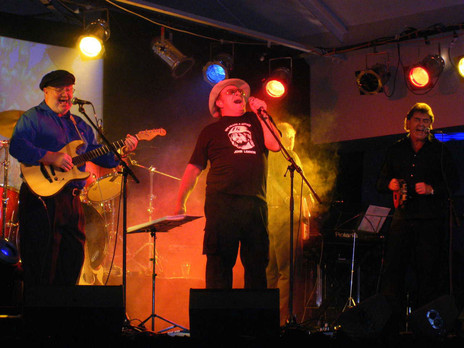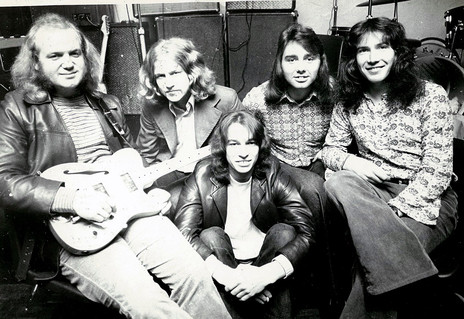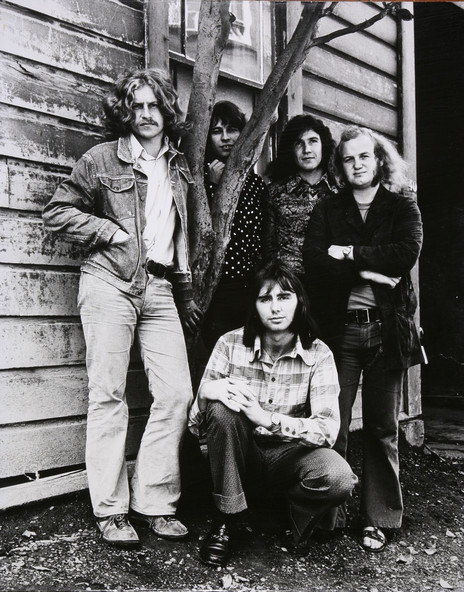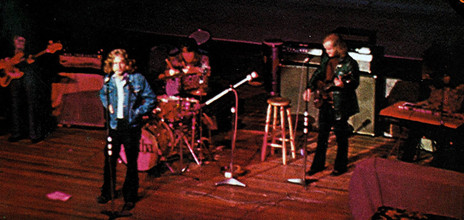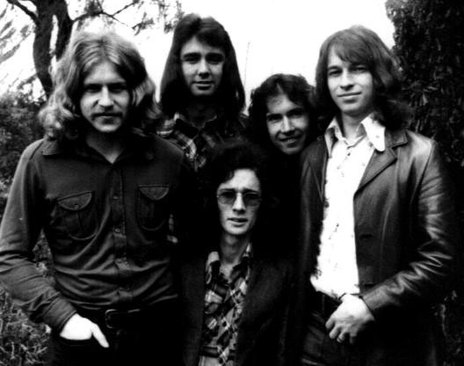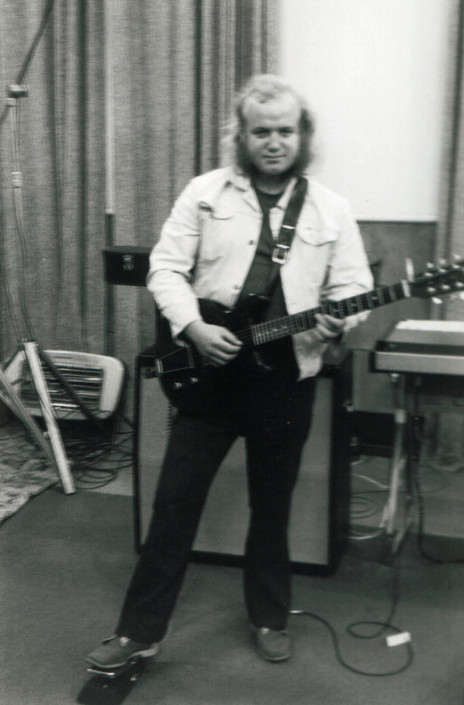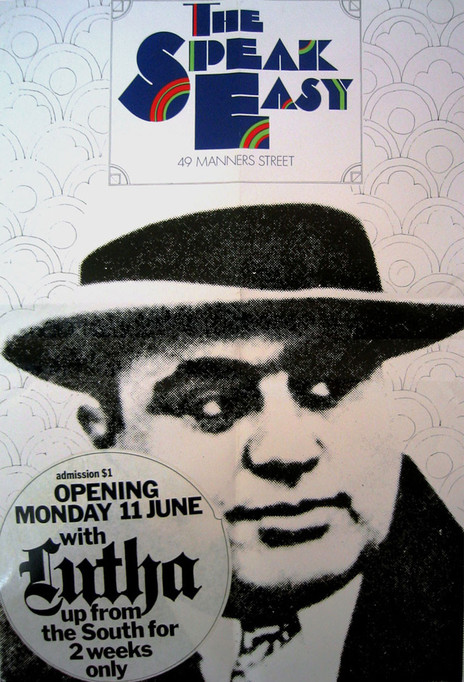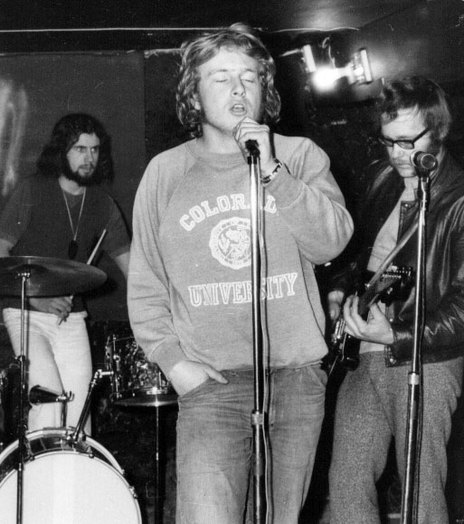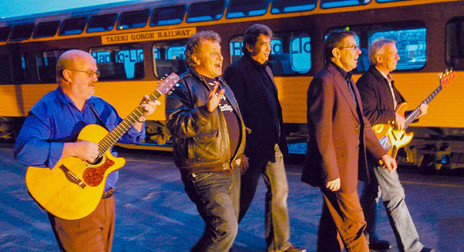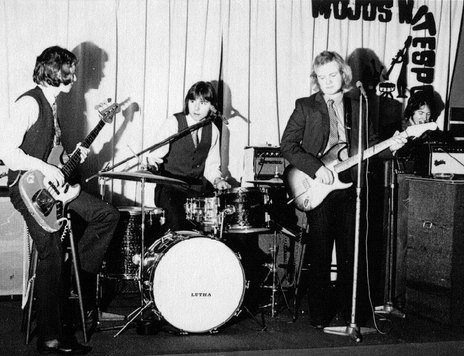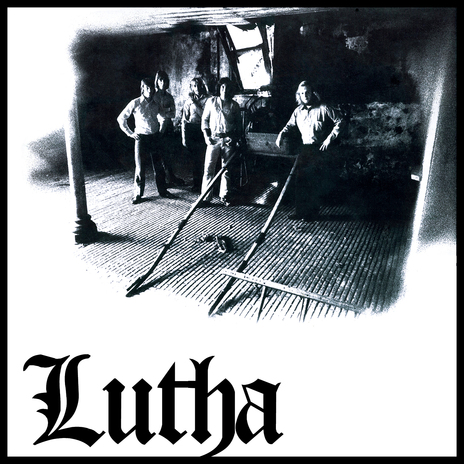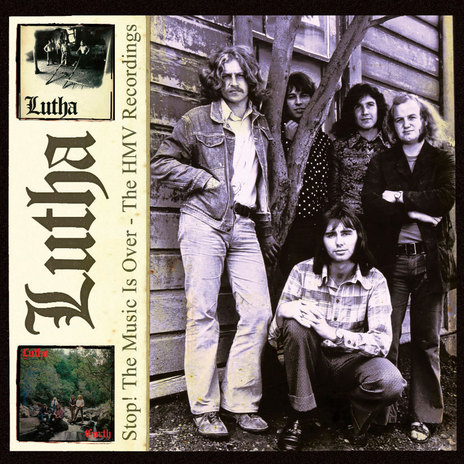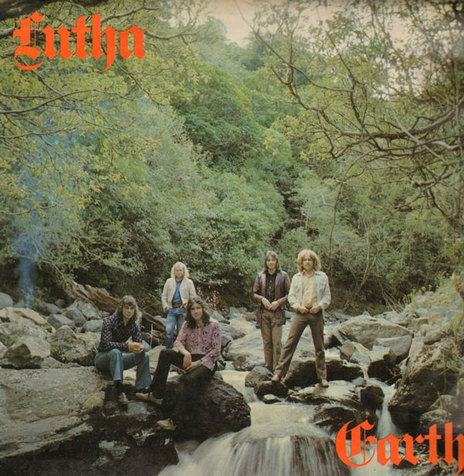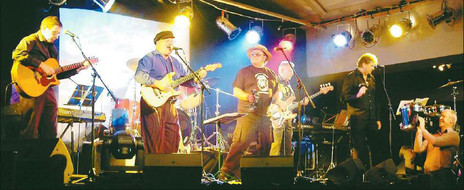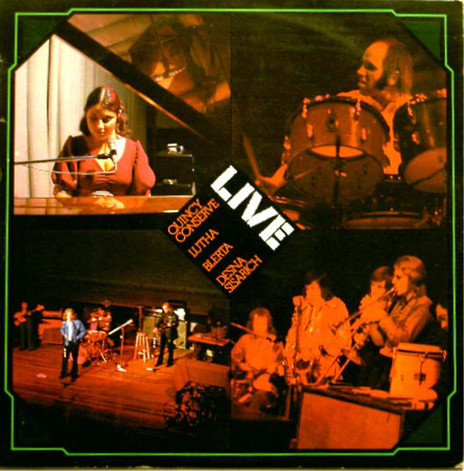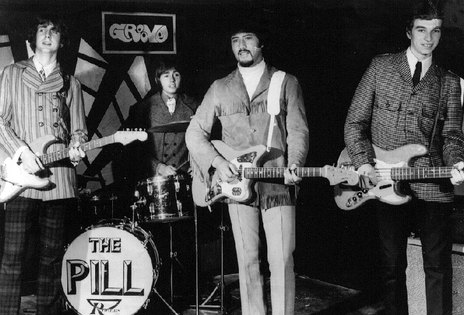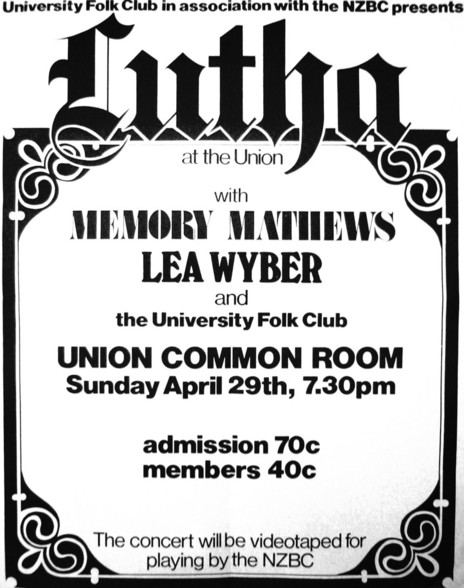The original line-up was Graham Wardrop (guitar, vocals), Garry McAlpine (percussion, vocals, Kevin Foster (keyboards), Peter Edmonds (drums) and Peter Fraser (bass, vocals). Wardrop and McAlpine were the songwriters within the group; I co-wrote with McAlpine.
Wee Pete Fraser: “I played with Big Pete Edmonds on drums in the Raiders. I played piano and then started bass. We had a broomstick for a mic stand. We were terrible. We changed our name each week. Later we became Gary’s Raiders and then The Pill, and then Throb with Big Pete as vocalist.
“Throb was auditioned by Peter Dawkins at HMV but we were rejected. Big Pete went back to drums and then came round one day to suggest Graham Wardrop, who was playing bass with Kaleidoscope. I said we don’t need two bass players. We went back to Graham and he said he would prefer to play guitar anyway.”
Graham Wardrop: “I was playing bass with a power trio called Kaleidoscope. Our best number was ‘Badge’ by Cream. I had a backlog of original songs from singing duets with my sister in talent quests and solo spots at folk clubs.
“I taught myself acoustic guitar and then developed an increasing bent for songs as art after studying John Lennon’s ‘In My Life’ as a poem for School Certificate exams. When Big Pete asked if I would play guitar in a new band with them – and I had never played electric guitar – I was over the moon. I listened to Pussyfoot at courtyard parties and university gigs and was blown away with Garry’s vocals.
Big Pete decided on a name for the four-piece, inspired by Martin Luther King.
“What I loved about Lutha was we were not just another rock band. We always felt that anyone could bash out music at high volume but it took skill to play quietly. We worked on that and plenty of harmony singing.”
Big Pete decided on a name for the four-piece, inspired by American civil rights campaigner Martin Luther King, and they debuted at the Mount Cook tourist resort in early 1971.
On keyboards and second guitar was Kevin Foster, ex-Honey Wine and Red House. By June they were resident at Mojos nightclub on George Street and rehearsing four nights a week with a frontline of three lead singers, including ex-Pussyfoot vocalist Garry McAlpine.
In August McAlpine gave a demo tape of four songs, all recorded at the Cellar Club, to HMV house producer Peter Dawkins in Wellington. Dawkins was regarded as “the man with the Midas touch” with a track record of number ones including The Fourmyula, Shane, Craig Scott and Hogsnort Rupert.
The demo tape, with ‘I Know It Was You’, ‘Andrianna’, ‘Stop: The Music Is Over’ and ‘Sun Song’, set the band’s style of strong harmonies, and a mix of up-tempo and soft rock. Within a week Dawkins was in Dunedin to sign Lutha for an album of originals.
Garry McAlpine: “I started fucking around about 1965 on a 2-track tape recorder that we borrowed from Paul the hairdresser at St Clair, where we used to eat fish and chips at school lunchtime. We recorded a chiming clock and the sound of bells. In 1967 songwriting started with Gordon Spittle using my father’s Akai M3 sound on sound tape recorder.
“At university we played a courtyard party and formed Pussyfoot when several jobs came along for university hops. We learned 23 songs in one afternoon but Pussyfoot showed no interest in doing originals and I joined Lutha.
“After the ‘Stop’ demo we finished writing and recording ‘Why Is Gone’ and ‘All Alone’ in one afternoon at home using the Akai. ‘Why Is Gone’ originally included a mandolin. We wrote the lyrics to ‘Stop’ in a couple of hours one afternoon at the Cellar Club about the end of a telegram message. ‘Sun Song [Anaximander Ramblings]’ was about Greek philosopher Anaximander. ‘All Alone’ was inspired by Neil Young’s ‘Old Man’. ‘Why Is Gone’ was a student protest song about the more you learn the less you know.”
After 30 hours in the HMV studio on Wakefield Street in Wellington, Lutha completed their debut album in early 1972, recording 10 numbers and sometimes working until 11.30pm. Bass guitar was mic’d from the speaker. The acoustic guitar was recorded in the vocal booth through a Dolby unit to bring out treble sustains. HMV was using its new 8-track recorder.
The first 45rpm single of Wardrop-penned songs, ‘Then I Saw Her Face’ b/w ‘Mountain Side’, was released on 4 March, 1972, accompanied by HMV publicity describing Lutha as “the most exciting new group to emerge for years – they're Dunedin based – write all their own material – and discovered and produced by Peter Dawkins.”
Dawkins himself was impressed enough to include a full lyric sheet with the album. He compared the group with Wellington’s Fourmyula, “not in sound or material but in ideas and originality.”
‘Then I Saw Her Face’ charted No.1 in hometown Dunedin – and No.4 in forecasts for the national Top 20 Pop-O-Meter in the NZ Listener – as the band was booked on national television shows Pop Co and Studio One. The NZ Listener described ‘Face’ as “one of the best group 45s heard locally. It is country rock cum gutsy R&B.”
Dawkins described Wardrop’s ‘It’s My Turn To Cry’ as “like a 1966 Beatles song”.
During July the follow-up single ‘Stop The Music Is Over’ b/w ‘It’s My Turn To Cry’ charted No.1 in Dunedin and rated No.3 in forecasts for the Top 20 Pop-O-Meter. National weekly The Sunday Times rated ‘Stop’ “certainly as good as the material some reputed top rock groups from the United States give us”. Influential NZ Listener columnist Ray Columbus scored it “as good as anything ever recorded in New Zealand”. Dawkins described Wardrop’s ‘It’s My Turn To Cry’ as “like a 1966 Beatles song”.
Mid-July the Lutha album reached record stores with 1000 copies pressed to retail at $4.99 each. HMV stoked publicity with announcement of plans to release it in Australia and Europe. ‘I Really Only Want To be With You’ reached the finals of the Studio One television talent show. Critics described “the sound from the south” as ranging from “gentle acoustic songs to foot-tapping country rockers”. Wardrop was compared with Paul McCartney and Graham Nash of the Hollies.
It would be Dawkins’ last album in New Zealand before moving to Sydney, Australia, and producing more No.1s for bands including Dragon and Mi-Sex.
Kevin Foster, keyboards and vocals: “Life on the keyboard was pretty tough in those days. I was listening to incredible stuff from Oscar Peterson to Rick Wakeman and the Hammond B3 organ was THE sound – but also big and expensive. Without the loot or the roadies, reality settled on an old Yamaha keyboard and Leslie speaker. Then as luck had it there was a Hammond in the studio at HMV. Roy Phillips of the Peddlers was breezing in and flicking a few sliders.
“The rhythm track recordings were done at a pace with little time to review them and make changes. It was pretty much get it right first up. Then Garry was laying the vocal on ‘Why Is Gone’ and I was blown away – the hair was standing up on the back of my neck.
“Lutha was sort of two groups. One recording originals and the other doing live covers. It was great to stretch ourselves with complicated harmonies on Crosby, Stills, Nash and Young stuff, and Frank Zappa’s ‘Tears Began To Fall’.”
Lutha increasingly featured on the Dunedin campus circuit during 1971. They performed four Wardrop songs at a capping concert as an art opera based on the Colin McCahon painting ‘I Am’. Two songs – ‘Empty Room’ and ‘Waterfall’ – appeared on the next album.
McAlpine and Wardrop combined with Dunedin jazz pianist Tim Hazledine to recruit an eight-piece band and 14-member space choir to perform Joe Cocker songs from his Mad Dogs And Englishmen tour. The show played two sold-out nights with Lutha performing a long version of Crosby Stills and Nash’s ‘Suite Judy Blue Eyes’. Lutha “not only held the audience completely but left them demanding more” with covers of ‘Tears Began To Fall’, and Sugarloaf’s ‘Green Eyed Lady’, intended as their next single.
Recording for the ‘Earth’ LP started in July with new producer and pianist Mike Le Petit.
Big Pete Edmonds: “The covers we played had our own interpretation and played to our strengths to develop a distinctive Lutha sound. I had played a long time with Wee Pete and Kevin and we had a strong three-piece section with the organ.”
Recording for second album Earth for EMI started in July with new producer and pianist Mike Le Petit. Engineers were HMV veteran Frank Douglas, who worked on the first album, and Michael Grafton-Green, who was fresh from London where he worked with producer George Martin during early Beatles recordings.
Publicity described Earth as more adventurous with a wider range of songs, and containing more of the group’s ideas in the studio. The front cover images were photographed at Dunedin’s Leith Creek. Inside, the images featured the city rubbish tip.
Mike Le Petit, producer: “I had worked with Quincy Conserve, Headband and BLERTA. Lutha was different because there were songwriters in the band. With Quincy Conserve and Headband I was usually looking for covers to record. Lutha came into the studio with original material, an existing song; and the band had some concept of it, and good recording ideas. Usually we recorded all the rhythm tracks down to two tracks and that left six tracks for vocals. For Earth Michael Grafton-Green and I played the 8-track mix through a Leslie unit into the studio and recorded it back off the monitors.”
The new album was previewed in September with release of ‘Earth’ b/w ‘I Really Only Want To Be With You’. ‘Earth’ included full orchestration, giving “a feeling of great hope to a song concerned with pollution” and reached the top five in Dunedin.
A second single, ‘Here And Now’ b/w ‘Waterfall’, was released ahead of the album in March 1973 and charted in the top 10 in Dunedin and low 20s in the influential Auckland charts. Album track ‘What Do You Do’ reached the finals of the Studio One television contest.
Sandwiched between studio recordings was a live album at Christchurch Town Hall in November 1973.
Sandwiched between studio recordings was a live album at Christchurch Town Hall in November 1973 with other EMI performers Desna Sisarich, Quincy Conserve and BLERTA. Lutha performed the Beach Boys song ‘Student Demonstration Time’ and their original ‘Andrianna’ and ‘Stop The Music Is Over’. For ‘Student Demonstration Time’ McAlpine used a footswitch to trigger a cassette recording of a police siren. Quincy Conserve sax player Denys Mason later played solo for the studio version of ‘Here And Now’ and Desna Sisarich sang top harmony.
I co-wrote many of the songs across both albums with Garry McAlpine. At the end of 1972 I was back home near the beach with a piano in the front room. ‘Here And Now’, ‘Places’, ‘Swirling Tides/ Old Tree’ and ‘Policeman’ were put together inspired by various Herman Hesse and Aldous Huxley books, and albums of the time by The Beatles, The Rolling Stones and the Beach Boys. There were lots of suspended fourth chords and a sense of resolving progressions. ‘Dandylions’ was written for the group members to each sing a verse. The uptempo ‘Swirling Tides’, intended as an angst introduction to ‘Old Tree’, fell off the final album.
During 1973, Lutha started to perform North Island venues amid critical acclaim for their second album. According to one hometown campus review the opening three tracks on side two “beginning with Wardrop’s acoustic gem ‘Waterfall’, and carrying on through an eyebrow-raising piece of Barclay James Harvest-type string rock, would be the best three consecutive tracks I’ve ever heard on a New Zealand album”.
The band performed at Auckland’s Mon Desir Hotel, and in Wellington alongside Quincy Conserve at the Spectrum disco room, advertised as “the top two bands in New Zealand”. Originals in their live set included ‘Earth’, ‘I Really Only Want To Be With You’, ‘Stop’ and ‘Here And Now’.
In June the band moved north from Dunedin to Christchurch and started a hotel residency six nights a week at The Edge. They played with Ticket for the opening of the Christchurch Town Hall. Three months later the group performed its final Dunedin concert and a farewell show for Wardrop before his shift to Sydney.
Lutha’s replacement guitarist, vocalist and songwriter was Kevin Bayley, who had been in Chapta and Taylor [Bayley later joined Rockinghorse and formed Short Story]. They toured south to Invercargill with Ticket and through Timaru to Invercargill with The Rumour and Jim McNaught. They considered moving overseas, but by early 1974 the band had run out of options and packed up the gear for the last time.
--
Read more: Roi Colbert on Lutha, NZ Rolling Stone, 1973
